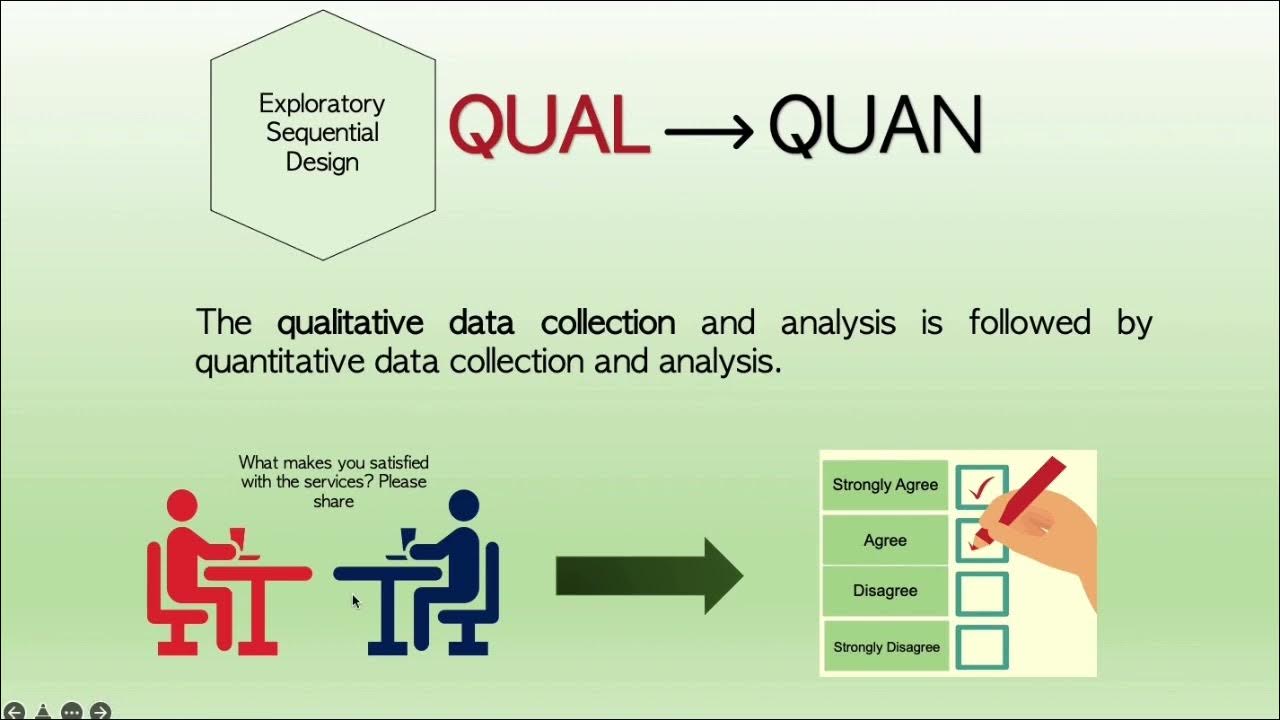TAHAPAN PENELITIAN RnD & CONTOHNYA
Summary
TLDRThis video script discusses the research process in RnB (Research and Development), contrasting it with conventional research. It outlines key differences, such as the purpose, nature, and operational aspects of RnB. The speaker elaborates on the stages of RnB research, including identifying a problem, gathering data, planning, designing, validating, revising, and testing. Examples of quasi-experimental designs are provided, emphasizing the importance of validation, revision, and expert consultation before implementation.
Takeaways
- 📚 The speaker, Khodijah Makarim, is discussing the stages of research, specifically RnB (Research and Development).
- 🔍 The first key difference between conventional research and RnB is that conventional research aims to solve problems, while RnB aims to develop or teach products.
- 🔄 The second difference is the nature of the research process; non-RnB research is linear, whereas RnB is cyclical.
- 🚀 The third distinguishing feature of RnB is that it is operationalized, aligned with interests such as quality improvement and education.
- 🤔 The first stage of RnB research is identifying a problem and deciding on the type of research to be conducted, such as evaluating a product or creating a new one.
- 📈 The second stage involves gathering data and facts from journals and literature to ensure the problem is worth researching.
- 📝 The third stage is designing a temporary plan or model, which could be graphical or pictorial, to be tested later.
- 🔍 The fourth stage is validating the design to ensure it's valid and doesn't need major revisions.
- 🔄 The fifth stage is revising the design based on feedback and testing to improve it.
- 📊 The sixth stage involves testing the revised design with a trial run, usually in a classroom setting.
- 👥 The seventh stage is a second revision after the trial run, often involving discussion with experts in the field related to the content being tested.
- 🏁 The eighth stage is the actual application of the product after two revisions and trial runs, marking the implementation of the research.
- 📝 An example given is a quasi-experiment design involving two classes, one receiving treatment (the experimental group) and one not (the control group), to test the effectiveness of a learning module or product.
Q & A
What is the main topic discussed in the script?
-The main topic discussed in the script is the research process of RnB (Research and Development), including its stages and examples.
What are the three main differences between conventional research and RnB?
-The three main differences are: 1) Conventional research aims to solve a problem, while RnB aims to develop or teach a product. 2) Conventional research is linear, whereas RnB is cyclical. 3) Conventional research is not operational, but RnB is conducted according to interests such as improving quality or education.
What is the first step in the RnB research process?
-The first step is identifying a problem that the researcher is interested in investigating through RnB.
Why is it important to gather data and facts before starting an RnB research?
-Gathering data and facts is important to ensure that the problem is worth researching and to build confidence in the research direction.
What does designing a temporary design or model involve in the RnB process?
-Designing a temporary model or design involves creating a preliminary version of a product, such as a learning module or a graphic design, which will be tested and potentially revised.
Why is it necessary to validate the design in RnB research?
-Validating the design ensures that it is effective and functional before proceeding with further development or implementation.
What is the purpose of the revision stage in the RnB process?
-The revision stage is for improving the design based on feedback and test results to ensure it meets the research objectives.
How does the tryout or testing phase work in RnB research?
-The tryout phase involves applying the revised design in a real setting, such as a classroom, to test its effectiveness and make further adjustments if necessary.
Why is it crucial to consult with experts during the RnB process?
-Consulting with experts ensures that the content and design of the RnB project are accurate and relevant to the field of study.
What is the significance of the quasi-experimental design mentioned in the script?
-The quasi-experimental design is significant as it provides a structured approach to testing the effectiveness of a product or intervention by comparing outcomes between a treatment group and a control group.
How does the post-test phase differ from the pre-test phase in a quasi-experimental design?
-The post-test phase occurs after the treatment has been applied to the experimental group, whereas the pre-test phase occurs before any treatment is given, allowing for a comparison of outcomes to measure the effectiveness of the intervention.
Outlines

Cette section est réservée aux utilisateurs payants. Améliorez votre compte pour accéder à cette section.
Améliorer maintenantMindmap

Cette section est réservée aux utilisateurs payants. Améliorez votre compte pour accéder à cette section.
Améliorer maintenantKeywords

Cette section est réservée aux utilisateurs payants. Améliorez votre compte pour accéder à cette section.
Améliorer maintenantHighlights

Cette section est réservée aux utilisateurs payants. Améliorez votre compte pour accéder à cette section.
Améliorer maintenantTranscripts

Cette section est réservée aux utilisateurs payants. Améliorez votre compte pour accéder à cette section.
Améliorer maintenantVoir Plus de Vidéos Connexes

PENELITIAN SOSIAL || SOSIOTALK

Cross-Sectional Study vs Longitudinal Study: Pros, Cons & How To Choose (With Examples)

PR2 - Introduction to Quantitative Research: Definition of Quantitative Research

EXPLORATORY SEQUENTIAL MIXED METHOD RESEARCH DESIGN

#vidiopembelajaraSeputaranMasalahAtauPotensiPenelitianKualitatif

T2 Understanding AR (2018)
5.0 / 5 (0 votes)
